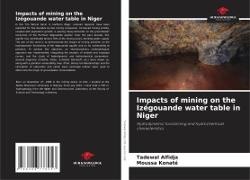Read more
In the Tim Mersoï basin in northern Niger, uranium deposits have been exploited for five decades by two mining companies. Increased mining activity, coupled with population growth, is placing heavy demands on the groundwater resources of the Permian Izégouande aquifer. Over the past decade, this aquifer has contributed almost 70% of the mining area's drinking water supply. The aim of this work is to demonstrate the impact of mining activities on the hydrodynamic functioning of the Izégouande aquifer and on its vulnerability to pollution. To achieve this objective, an interdisciplinary methodological approach was implemented, integrating the analysis of isobath and isopaque curves, and the study of hydrodynamic and hydrochemical parameters. Several diagrams (Chadha, Gibbs, Schöeller Berkaloff, etc.) were drawn up, along with a pollution vulnerability map. PCAs, Binary Ion Relationships and the calculation of saturation and cation base exchange indices were used to determine the origin of groundwater mineralization.
About the author
Urodzony 27 listopada 1990 r. w górniczym mie¿cie Arlit, studiowäem na Uniwersytecie Abdou Moumouni w Niamey. Od lipca 2022 r. jestem doktorem hydrogeologii w Laboratorium Wody i Zasobów Geologicznych na Wydziale Nauki i Technologii w Niamey.

